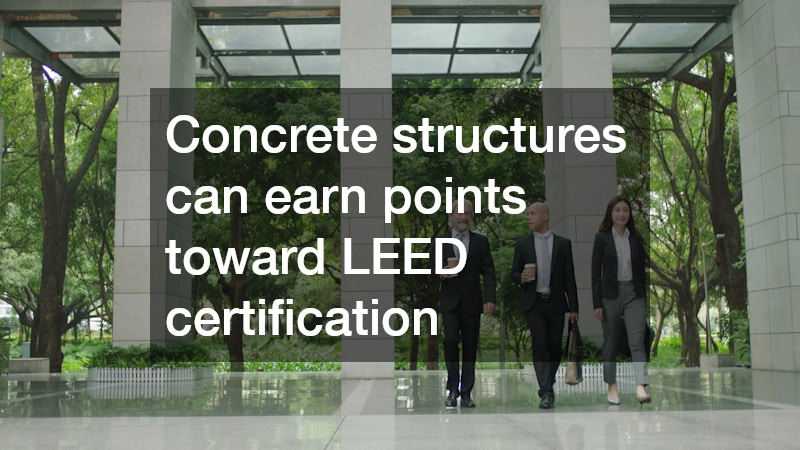Precast concrete has emerged as a preferred choice for builders and architects alike. This innovative material is manufactured in controlled environments before being transported to construction sites for assembly. The advantages of using prefabricated concrete not only streamline the construction process but also significantly improve the overall quality and sustainability of buildings.
Explore the cost efficiency, environmental benefits, and exceptional qualities of precast concrete for contemporary construction projects.
Cost Efficiency
One of the primary reasons contractors opt for precast concrete is its unparalleled cost efficiency. The controlled manufacturing conditions allow for precise production, minimizing waste and reducing material costs. Additionally, because precast components can be produced simultaneously with site preparation, project timelines are expedited, leading to shorter construction periods and lower labor costs. This integration of stages results in decreased overhead expenses, allowing construction managers to allocate resources more effectively. Furthermore, the long-term durability of precast components means that maintenance and replacement costs over the building’s lifetime are dramatically reduced.
Precast concrete’s versatility contributes to its cost-effectiveness, as it can be molded into a variety of shapes and sizes to fit specific project needs. This flexibility allows architects and designers to push creative boundaries while adhering to budget constraints. By minimizing the need for custom designs or unique construction methods, concrete can help avoid costly reworks or modifications during the building process. As a result, construction firms can deliver projects on time and within the set financial framework, increasing client satisfaction and confidence in their services.
The balance of initial investment and long-term savings makes prefabricated concrete a financially sound decision for many construction projects. When comparing the overall lifecycle costs, precast concrete offers a more attractive proposition than building methods reliant on conventional materials. By choosing precast options, companies can stay competitive in an increasingly challenging market while delivering high-quality results. These cost savings can open budget opportunities for further investments in innovative building technologies.
Environmental Benefits
As society becomes increasingly aware of environmental issues, construction methods that prioritize sustainability are more critical than ever. Precast concrete supports eco-friendly practices through its efficient use of raw materials and energy in production. By manufacturing components off-site, waste is significantly reduced, and the potential for harmful environmental impacts is minimized. Many precast plants also implement recycling measures for excess materials, further supporting sustainable construction goals. Thus, the use of prefabricated concrete aligns with modern architects’ and builders’ commitments to environmentally responsible practices.
Structures made of precast concrete can contribute to energy efficiency over their operational lifetimes. Concrete’s thermal mass properties help regulate temperature, reducing the energy needed for heating and cooling systems. Buildings constructed with precast elements often demonstrate lower overall energy consumption, which can significantly lessen the carbon footprint. Additionally, many precast manufacturers use supplementary cementitious materials that have a lower environmental impact than traditional construction methods. These practices not only create a more sustainable product but also resonate with clients and stakeholders who prioritize green building standards.
The innovation surrounding prefabricated concrete doesn’t stop at energy and resource efficiency. It also extends to certifications and sustainability measures such as LEED (Leadership in Energy and Environmental Design). Concrete structures can earn points toward LEED certification, making them more appealing to environmentally conscious customers. By embracing prefabricated concrete, the construction industry can significantly lower its environmental impact while still delivering robust and attractive buildings.
Quality and Durability
The quality and durability of precast concrete are integral to its appeal in construction. Produced in controlled environments, precast components undergo rigorous quality control measures to ensure consistency and performance standards. This attention to detail results in structures that withstand various stresses, extreme weather conditions, and the test of time. Unlike traditional building methods that may be vulnerable to external factors during construction, precast elements are created under optimal conditions, enhancing their structural integrity. As a result, buildings made with prefabricated concrete boast higher longevity and require less maintenance over the years.
Precast concrete can also be engineered to meet specific design requirements, ensuring that it fulfills the various roles expected of modern buildings. The versatility in design allows for the incorporation of architectural aesthetics alongside functional needs, enhancing the overall value of the property. With advanced technology, producers can create precast components that not only have high performance but can also be visually appealing. From textures to colors, the possibilities are virtually endless, allowing designers to express their vision without compromising on quality.
The durability of prefabricated concrete is further complemented by its resistance to various elements, including fire, moisture, and pests. These features provide enhanced safety for occupants and reduce the likelihood of costly repairs or replacements. The low maintenance requirements of precast structures contribute to their overall cost-effectiveness in the long run. With minimal upkeep needed, property owners can invest more in additional projects rather than continuous repairs, thus enhancing their overall ROI.
Prefabricated concrete presents numerous advantages that make it a smart choice for modern construction projects. From cost efficiency to environmental benefits and exceptional quality, it’s clear that prefabricated concrete not only meets but exceeds the demands of today’s construction industry. Its production process, durability, and versatility allow projects to come to fruition more swiftly and sustainably. As the industry continues to evolve, the integration of precast concrete sets the standard for innovative, responsible building practices.




